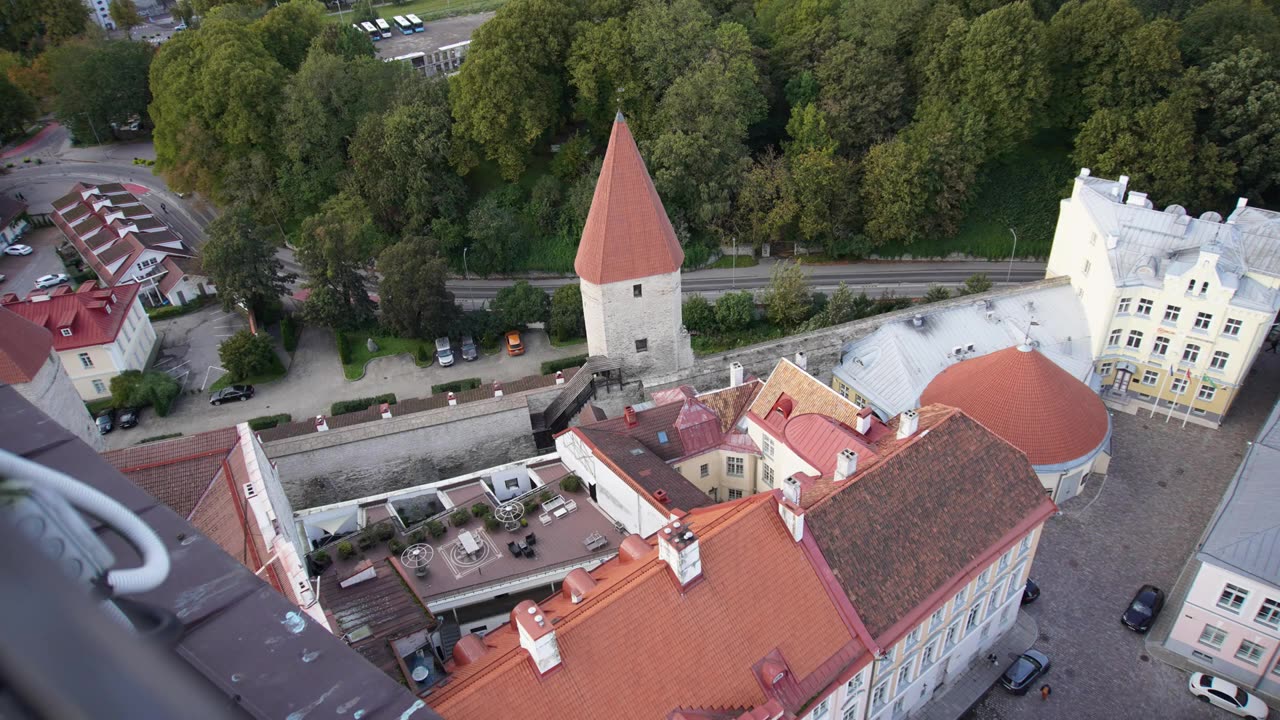Premium Only Content

Historic St Olaf's
Historic St Olaf's. Saint Olaf II Haraldsson, also known as St. Olaf, was born in 995 and became King of Norway in 1015. His reign, marked by efforts to Christianize Norway and centralize royal authority, sparked conflicts with local chiefs and neighboring kingdoms. He met his end in 1030 at the Battle of Stiklestad while attempting to regain his throne. Despite his violent death, he was swiftly revered as a martyr and saint, formally canonized in 1164.
Today, Saint Olaf remains Norway's patron saint, honored annually on July 29. Numerous churches and institutions bear his name, including the iconic St. Olaf's Church in Tallinn, Estonia. Built in the 12th century, this medieval marvel originally served Tallinn's Hanseatic merchants and craftsmen.
Notably, St. Olaf's Church features a towering spire that, from 1549 to 1625, made it the tallest building globally, rising to 124 meters. Despite being struck by lightning and rebuilt multiple times, it offers breathtaking panoramic views of Tallinn's Old Town and beyond.
Legends abound about the church, including tales of its use as a pirate lookout and reports of a haunting monk. These stories contribute to its mystique, drawing visitors to explore its Gothic architecture and historical ambiance.
As an active Lutheran church, St. Olaf's continues to host services and events within its ancient walls, embodying Tallinn's medieval legacy and serving as a symbol of the city's cultural heritage. Exploring St. Olaf's Church offers visitors a captivating glimpse into Estonia's rich history and architectural splendor.
#TallinnSpires #EstonianHistory #medievalarchitecture #TallinnLandmark
-
 2:51:42
2:51:42
Laura Loomer
3 hours agoEP123: Trump Admin Puts Harvard In Their Crosshairs
12.6K6 -
 6:29:41
6:29:41
MyronGainesX
1 day ago $1.35 earnedCharlie Kirk vs 400 Cambridge Students And Andrew Wilson vs Feminist
52.5K15 -
 9:11:39
9:11:39
Bitcoin Magazine
1 day agoThe Bitcoin Conference 2025 | Day 1 Livestream
210K15 -
 23:08
23:08
Producer Michael
10 hours agoWE FINALLY FLEW HIM TO BEVERLY HILLS! MILLION SUBSCRIBER GIVEAWAY
21.8K3 -
 1:29:30
1:29:30
Glenn Greenwald
7 hours agoThe ADL's Censorship Mission Revealed | SYSTEM UPDATE REVISITED
66.4K29 -
 LIVE
LIVE
Reolock
5 hours agoWoW Classic Hardcore | Levels for DAYS
243 watching -
 3:33:02
3:33:02
Barry Cunningham
4 hours agoPRESIDENT TRUMP WANTS TO HELP YOU BE RICH! AND THAT'S NOT A BAD THING!
40.5K9 -
 2:05:09
2:05:09
Amish Zaku
1 day agoCall in Creations Volume 1 - Full Album
16.9K7 -
 3:15:39
3:15:39
Culturama Podcast
3 hours agoJordan Peterson Fake Christian?
17.4K3 -
 1:46:45
1:46:45
Anthony Rogers
10 hours agoEpisode 368 - Ain't No Party Like a Diddy Party
16.7K3